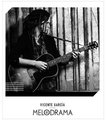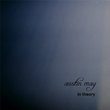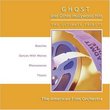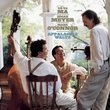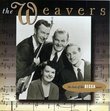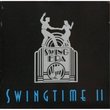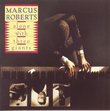| All Artists: Philip Glass, Michael Riesman, Dora Ohrenstein Title: Philip Glass: In the Upper Room; Glasspieces Members Wishing: 0 Total Copies: 0 Label: Sony Release Date: 10/25/1990 Genres: Dance & Electronic, New Age, Classical Styles: Techno, Ballets & Dances, Ballets, Historical Periods, Modern, 20th, & 21st Century Number of Discs: 1 SwapaCD Credits: 1 UPCs: 074643953924, 074643953948, 074643953924 |
Search - Philip Glass, Michael Riesman, Dora Ohrenstein :: Philip Glass: In the Upper Room; Glasspieces
 | Philip Glass, Michael Riesman, Dora Ohrenstein Philip Glass: In the Upper Room; Glasspieces Genres: Dance & Electronic, New Age, Classical
|
Larger Image |
CD DetailsSimilar CDsSimilarly Requested CDs
|
CD ReviewsChilling DAC Crowell | 05/21/1999 (4 out of 5 stars) "Even though the entire album is one of his best, the first Glasspience is absolutely amazing. It is quite haunting yet beautiful at the same time" A wonderful first exposure to the works of Philip Glass Jeffrey J.Park | Massachusetts, USA | 05/19/2007 (4 out of 5 stars) "I have only just recently started exploring the major minimalist composers and found this compilation by Philip Glass to be very interesting and perhaps a little bit more accessible in contrast with early compositions by Terry Riley. In general, the music on this compilation features ostinatos mixed with arpeggios and like most minimalism, the pieces are deeply meditative. Glasspieces was originally performed in 1983; the nine movement In the Upper Room suite premiered in 1986; and both accompanied a ballet performance. Neither of the pieces on this compilation are presented in their original (complete) form. Specifically, only five of the nine movements (selected by Glass himself) originally included on In the Upper Room are presented on Dancepieces, while only movements 4 and 5 were taken from the original six movement Glassworks (1982). Track eight represents a single movement taken from the Akhnaten suite (1987). Admittedly, the abbreviated version of In the Upper Room does not work very well. Then again, I really did not mind too much because the music is fascinating. Of the two pieces my favorite is the more subdued and gloomy In the Upper Room, which emphasizes "classical" instrumentation. In large part, the music on this album is very brooding, reflective, and dominated by woodwind, brass and string instruments. There are however, some extremely "rhythmically charged" moments where just percussion and synthesizers are used, e.g. Glasspiece No.3 Funeral from Akhnaten. The technique of the musicians on Glasspiece No. 3 is particularly dazzling. Melodies are also sprinkled throughout and add a lot to the texture of each piece. Total running time of the CD is 45'45" with In the Upper Room clocking in at approximately 23'25" and Glasspieces at 22'18". There are a number of musicians on both pieces and In the Upper Room includes conductor Michael Reisman on piano and synthesizers (it sounds like an Oberheim polyphonic and possibly a Yamaha CS80 polyphonic). Fortunately, the synthesizer tone colors are very warm and do not sound (too) synthetic in a 1980s way. In addition to the keyboardist, there are a number of string, brass, and woodwind players. Synthesizer use is much heavier on Glasspieces, although the second Glasspiece movement is dominated by strings and woodwinds and is very haunting (my personal favorite). Although nearly all instrumental music, the addition of voice (Dora Ohrenstein) on both pieces was a very nice touch. All in all I found this compilation to be a great introduction to the works of minimalist composer Philip Glass. Although I had objections to the "butchered" version of In the Upper Room it really was not all that bad - in fact I am inspired to seek out the original. Recommended along with works by other minimalist composers including Terry Riley, Steve Reich, and Lamonte Young." The paradox of variety and minimalism Essential Logic | Kirksville, MO United States | 03/16/2006 (4 out of 5 stars) "This collection gives a narrow but varied sample of Glass's pieces used by noted choreographers. The music is very danceable even for the non-professional and is highly recommended for teachers who want to broaden their dance students' sensibilities beyond stale over-orchestrated bits of "Nutcracker" or bubble gum pop music adored by "dance teams"."
|

 Track Listings (8) - Disc #1
Track Listings (8) - Disc #1